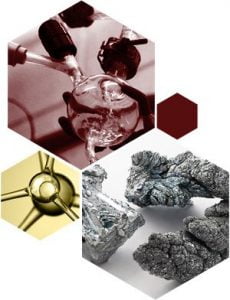
Rubidium Chloride, anhydrous
Properties
- We can offer items in bulk or custom. For other quantities or purities, please request a quotation.
- All prices are subject to change.
Related Products
Information about Rubidium Chloride, anhydrous / CAS 7791-11-9
Rubidium Chloride (RbCl) is an alkali metal halide known for its high solubility in water, making it valuable in various scientific and specialized industrial applications. This anhydrous compound serves as a precursor in chemical synthesis, particularly in the production of specialty rubidium-based materials. It is used in fields such as electrochemistry, molecular biology and optoelectronics. Notably, RbCl enhances ionic conductivity and modifies structural properties in advanced materials, positioning it as an essential reagent in next-generation technologies.
Rubidium Chloride plays a pivotal role in structural chemistry and materials science. Studies on Rubidium Copper halides, such as Rb₂CuX₃ (X = Cl, Br), highlight RbCl’s role in modifying crystal structures and electronic properties, making it valuable in developing novel optoelectronic materials. For example, incorporating Rubidium Chloride into perovskite structures improves film quality, enhances charge transport, and increases moisture resistance, leading to greater efficiency and stability. Studies have demonstrated that rubidium halide additives, including RbCl, improve precursor solubility and film crystallization, thereby contributing to the development of efficient and durable perovskite solar cells.
In the energy sector, Rubidium Chloride is being explored for its potential role in ion transport and solid-state electrolytes. These studies suggest that Rubidium Chloride (anhydrous) has potential in solid-state electrolytes and batteries by significantly increasing ionic conductivity and stability, thereby improving capacity retention. While Lithium and Sodium salts are more commonly studied in battery technology, some research suggests that Rubidium-containing compounds may contribute to improved electrochemical stability and conductivity in specific energy storage applications.
In cell biology and molecular biology, Rubidium Chloride finds applications in the transformation of cells and in the development of novel diagnostic and imaging techniques. RbCl is commonly used in cell culture media to promote DNA uptake during the process of introducing foreign DNA into a cell, a fundamental technique in genetic engineering.
- Tang, Y., Roy, R., Zhang, Z., Hu, Y., Yang, F., Qin, C., … & Liu, H. (2022). Rubidium chloride doping TiO2 for efficient and hysteresis-free perovskite solar cells with decreasing traps. Solar Energy, 231, 440-446.
- Park, I. J., Seo, S., Park, M. A., Lee, S., Kim, D. H., Zhu, K., … & Kim, J. Y. (2017). Effect of rubidium incorporation on the structural, electrical, and photovoltaic properties of methylammonium lead iodide-based perovskite solar cells. ACS applied materials & interfaces, 9(48), 41898-41905.

